Feta - Easy Cheesey
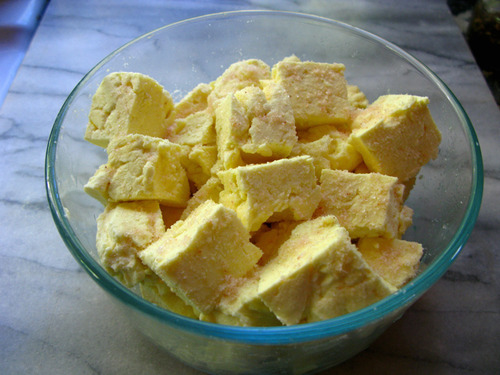
This cheese has a great taste, texture and colour. This is as natural a recipe as I could work out, based on traditional and commercial Feta making techniques. For this cheese, use raw cow milk, but sheep or goat milk would work just as well. In using raw milk, the need to add calcium chloride is removed (its role is to repair the damage caused when milk is killed by pasteurisation). Whenever you see a cheese recipe that calls for calcium chloride, ignore this step if you are using raw milk. Likewise with the inoculation culture; a culture will either be mesophilic, or thermophilic. Where a thermophilic culture is called for, use kefir milk or whey; and where a mesophilic culture is called for (as in Feta making), use cultured buttermilk. Specific cultures are useful to imitate a desired cheese, but there is also nothing wrong with creating our own local version of these cheeses, using the organisms native to milk, kefir, and our local environment.
2 litres of full cream raw milk
¼ cup cultured raw buttermilk*
¼ tsp liquid rennet dissolved in ¼ cup of pure water
2 tsp Himalayan salt
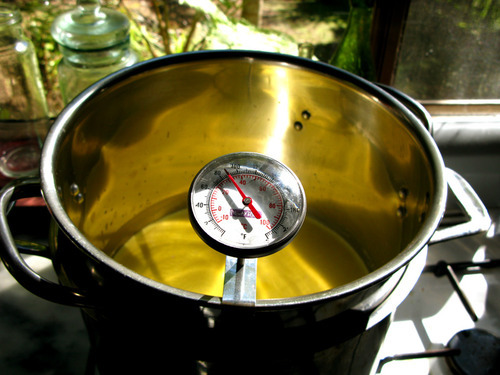
Bring milk to 30° C in a double boiler or similar arrangement. I used one large stock pot, with a slightly smaller one inside it, water in the outside pot, milk in the inside pot, so the milk is gently warmed by indirect heat. Once at 30° C, add the cultured buttermilk*, and maintain the temperature for 60 minutes. Add the diluted rennet, stir in well (but gently), then maintain the temperature for another 60 minutes.
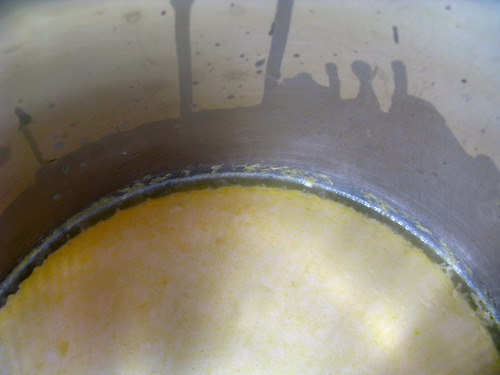
Look for a clean break** between cheese and pot, and when this achieved, cut the curd into cubes of about 1.5 cm (a little over ½ an inch), angling the knife diagonally if the curd is deep, and adjusting the cube size upward to compensate for diagonal as well as vertical cutting. Don’t be too precise about it, the curds will knit back together again later, near enough is good enough here. Let the curds sit in the whey for 15 minutes, and then gently stir the mixture with a wooden spoon for 15 minutes, being careful not to break up the curds.
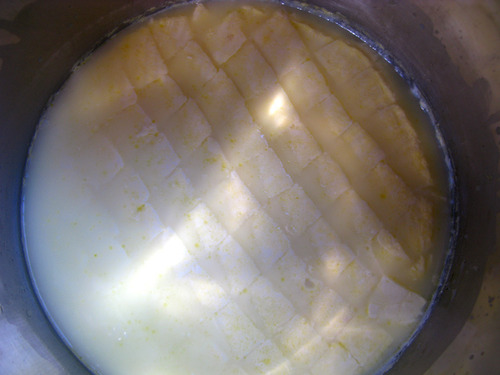
Put a piece of cheesecloth or loose weave muslin inside a colander or sieve sitting over a bowl. Pour the curds and whey into the cloth, and when most of the whey has drained through, gently gather the corners of the cloth and tie together so the curds are tight in a little parcel. Suspend the cheesecloth over a pot, and let drain for 6 hours, or overnight.
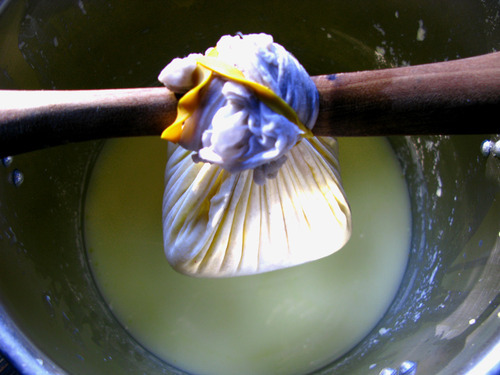
Untie the cloth, and take the cheese out of it. The curds will have all knitted back together during the draining process. Place the cheese on a board or plate and cut into 2.5 cm (1 inch) cubes. Salt the cubes with 2 tsp of mineral rich, good quality salt, and place in cool or cold storage for 3 days to mature.
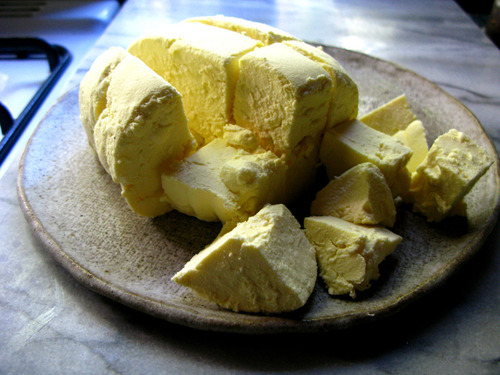
Even though heating of the milk is involved here, the low temperatures involved still leave the milk raw, in that none of the natural, living properties are affected. Therefore, this qualifies as a raw cheese, and a raw food.
* cultured buttermilk – to culture buttermilk, shake, churn or process raw cream into butter, and place the buttermilk in a jar on the bench for 24-48 hours, dependant on temperature. Less when it’s hot, more when it’s cool. The buttermilk will lose its sweetness, and will become acidic and full of live cultures.
** clean break – the milk has separated into curd and whey, and the mass of milk solids very clearly and cleanly breaks away from the side (and bottom) of the pot. In a way, the curd appears to be floating in the whey, and a knife can be run along the outside of the pot without damaging the curd.